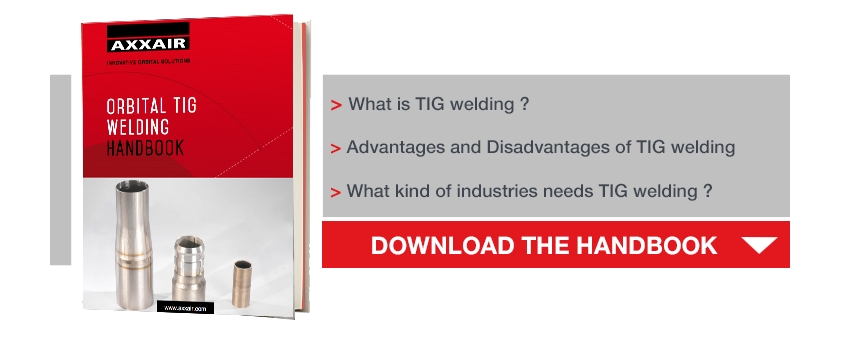From manual welding through to automated welding processes and orbital welding: technological progress has revolutionized the world of welding.
There are a number of different welding processes that are adapted to suit the type of material used and the location where the welding takes place.
Automated welding to guarantee quality
A number of different factors can influence the quality of manual welds, such as the height of the welding arc, the welding speed, the strength and frequency of the pulses in the welding current, the base material, the welding material, thermal conductivity – to name but a few. In the context of manual welding, optimal quality can only be obtained if the welder has the correct expertise to choose the right combination of settings, and manual welds that successfully obtain optimal quality standards are rare.
Safety is also at the heart of manual welding activities, due to the unique difficulties caused by locations, such as descending vertical welding, welding on ceilings, and in confined spaces, that can sometimes lead to errors and malfunctions that can lead to serious consequences such as leaks or breakages.
In plants that manufacture items through series production on assembly lines, welding and assembly is undertaken by automated machines. The process is managed by computer and operates independently, following a predefined program that ensures regular, consistent welding at each point, in particular when welding points are repeated at several locations on the product. Automated welding processes are highly accurate, and can automatically be adapted, simply by adjusting the electrical or heat settings. They can make allowances for welding variations, or differing gaps in the items to be assembled. Nonetheless, a human presence is still required in order to manage the overall process and to ensure that all operations are carried out correctly.
Automation and orbital welding (a welding process that involves a constant, 360-degree arc weld around a tubular item) also allows welding to take place in locations that would be difficult for a welder to reach, as well as allowing welding operations in highly restricted or hostile environments, all the while retaining the same regular results and perfect protection from the conditions. Orbital welding is recommended for welding tubes and pipes.
The semi-automatic solution for smaller welding jobs
Between entirely manual welding and full automation, mechanically-assisted welding transfers all the physical labor to the machine but leaves responsibility for monitoring the process with the welder, who retains complete control of the situation. All aspects of the welding procedure are performed by the machine after being programmed at the start of the process. In practice, a variety of restrictions often cause the welder to make changes and readjustments while the process is underway.
Automated orbital welding aims to increase productivity while achieving consistently high quality standards as a result of reduced defects. It also allows profitability to be maximized due to a reduction in the number of defective items, as well as a significant reduction in monitoring and supervision (and the associated costs). Automation is therefore the ideal solution for products that require several small welds that run in different directions or that require welding at an awkward angle.
The welder’s experience and expertise: added value for more complex welds
The welder is an operator whose job is to control the machine and monitor how it works. In the production of some, more complex items with a high value-added element, such as spacecraft, and items for the aeronautical, nuclear energy or petrochemical sectors, welding is performed by robots that are programmed by experienced welders. Where the items are to be produced in small quantities or as custom items, semi-automated welding with manual support is preferred during on-site assembly.
In the case of mechanical or semi-automated welding equipment, welders require enhanced protection due to the increased exposure to risk. Faced with an increase in automation, welders must learn to adapt – but will also enjoy safer working environments due to the use of orbital welding machines. Nonetheless, their presence remains vital to ensuring perfect results, and the use of machines would not achieve anything if welders were not able to apply their expertise, use the machines professionally, and monitor the industrial production lines.



